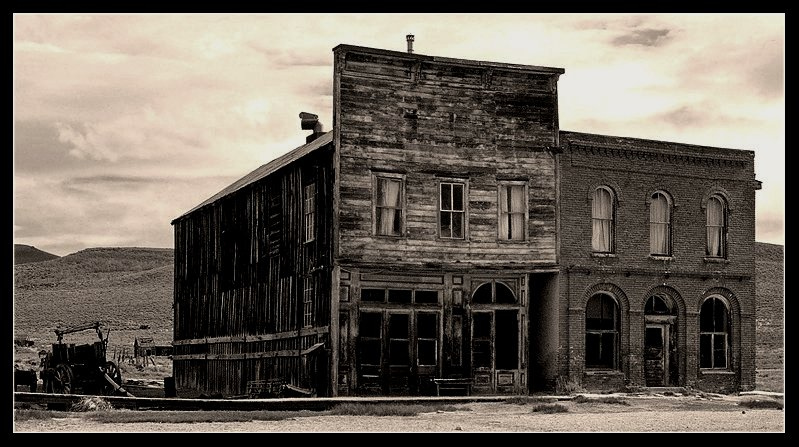
Buildings in the abandoned gold rush town of Bodie, California, USA. Fall/Autumn 1988. Photo by velodenz, and used under a Creative Commons license.
Through various examinations of gold mining, the following articles give us a glimpse of 150 years of evolving habits, beliefs, and values of Californians. As you read them, take notes about what habits, beliefs, and values you see explicitly stated, implied, or otherwise represented by historians, by scientists, and witnesses to California mining.
As you will learn, the mining of California’s rivers and their environs for gold—through placer mining and suction dredging, for example—is an engineered process that itself reengineered landscapes and watersheds in parts of California.
The links to these articles should allow you to download the full text of the articles if you are on a campus network. If you are not on campus, you will need to go to the Albertsons Library website, click on “Articles and Databases,” select JSTOR from the list of databases, and search for the articles by title and/or author. At some point you will be prompted for your Boise State login credentials.
Gold mining in California
- Eduard Reyer, “Placer-Mining in California” (1886, translated and republished, 1935)
- Patricia Nelson Limerick, “The Gold Rush and the Shaping of the American West”
- Two reviews of of Andrew Isenberg’s book Mining California: An Ecological History:
- U.S. Geological Survey, “Mercury Contamination from Historical Gold Mining in California”
- Karuk Tribe press release published in the Times-Standard, “California moves to close suction dredge mining loophole”
This final article, about the Los Angeles River, is not about a river directly affected by gold mining, but rather by other industrial processes. Still, it reveals some of the habits, beliefs, and values of contemporary Californians about the rightful functions and uses of rivers in an urban area.